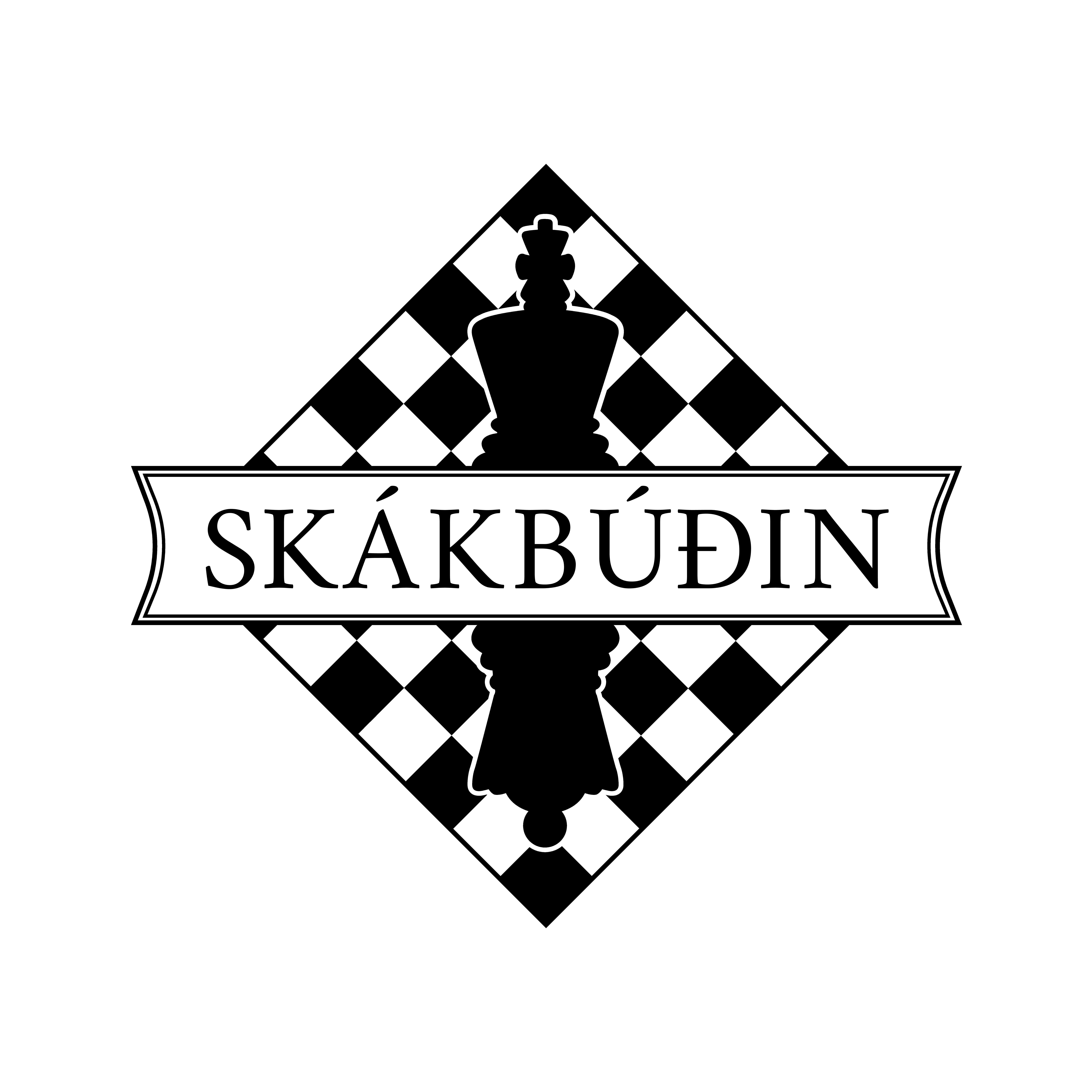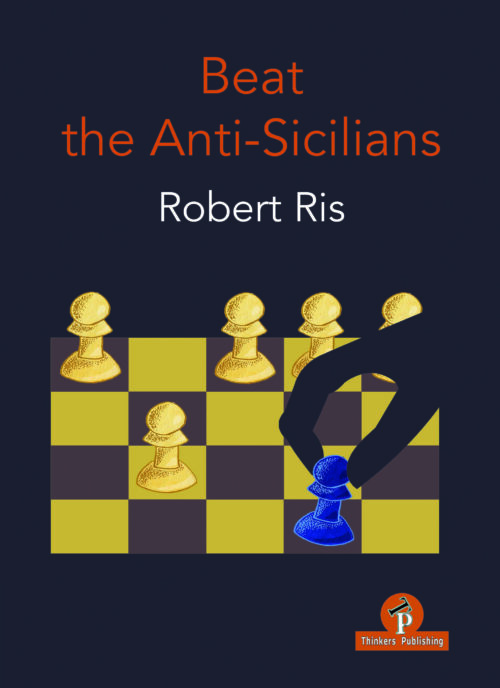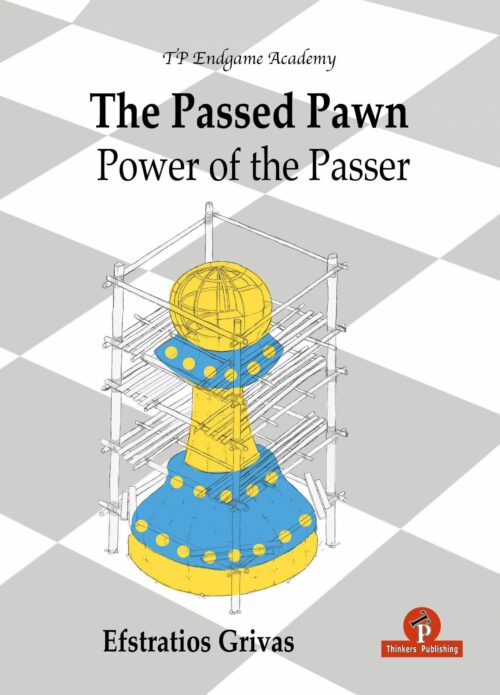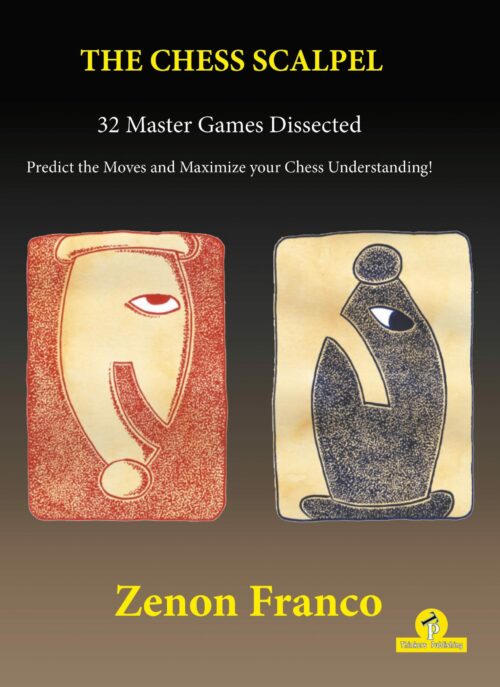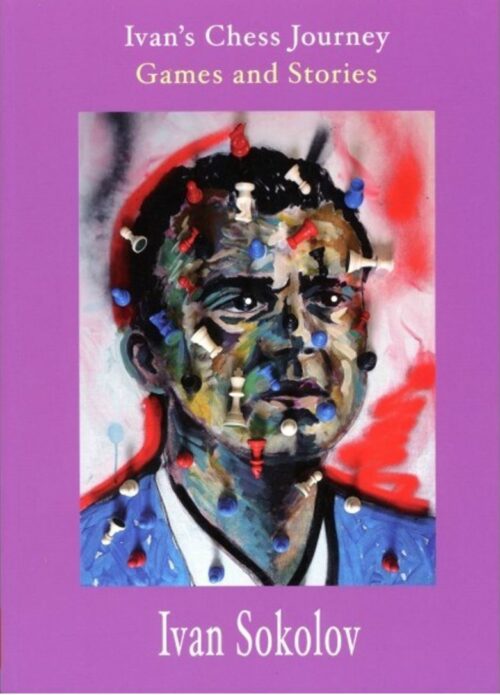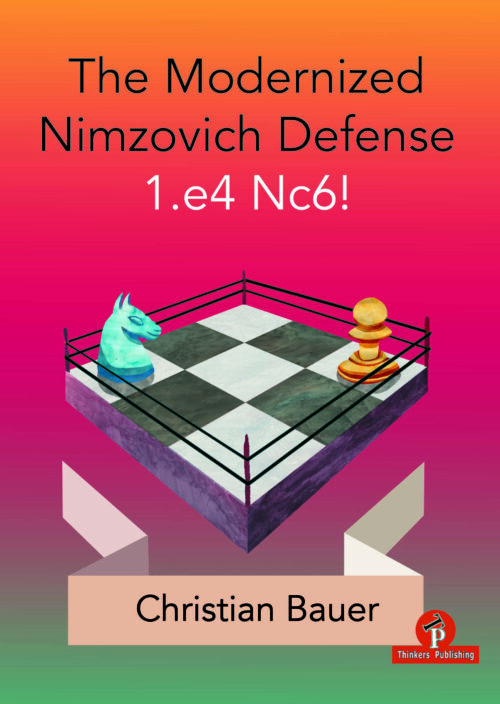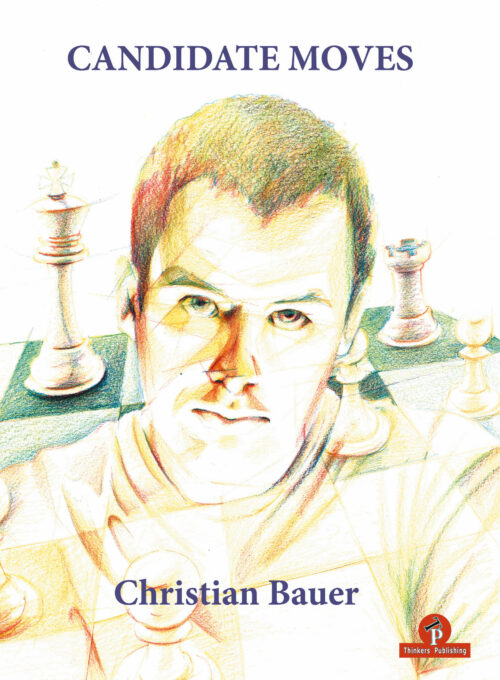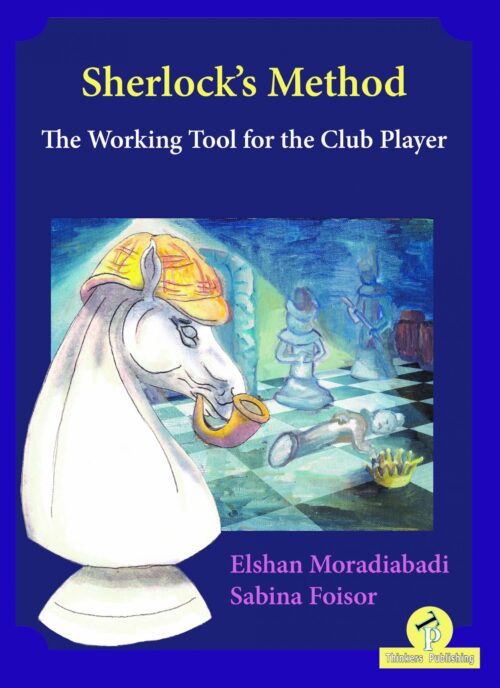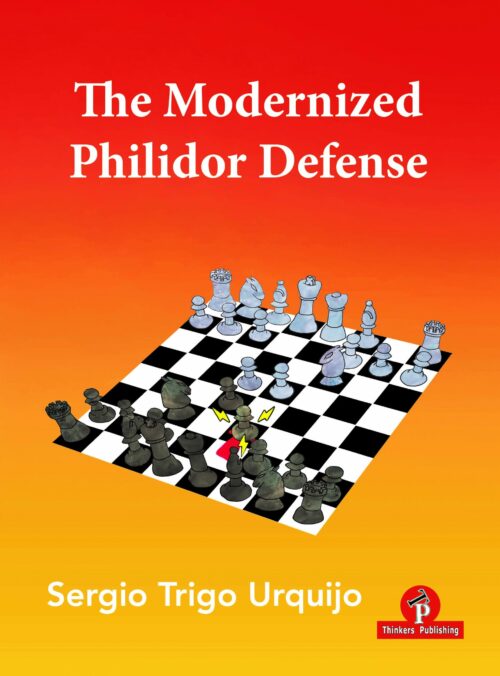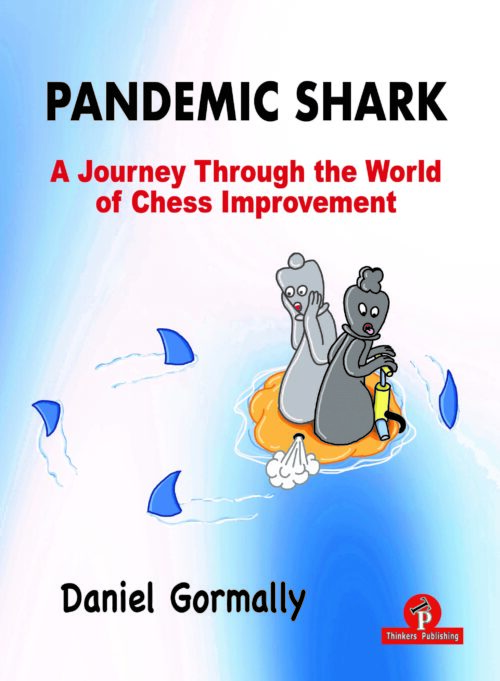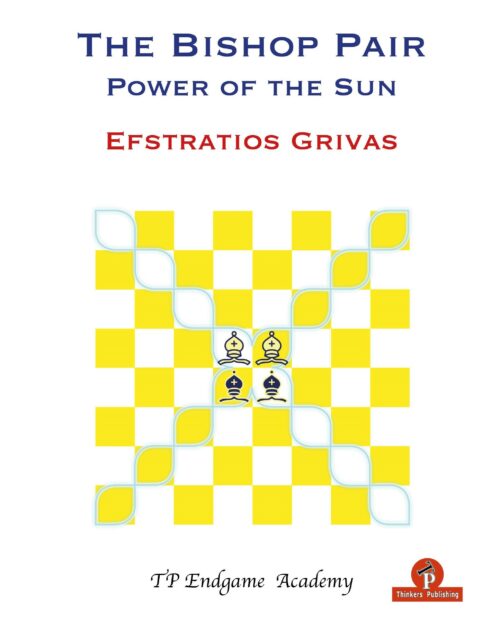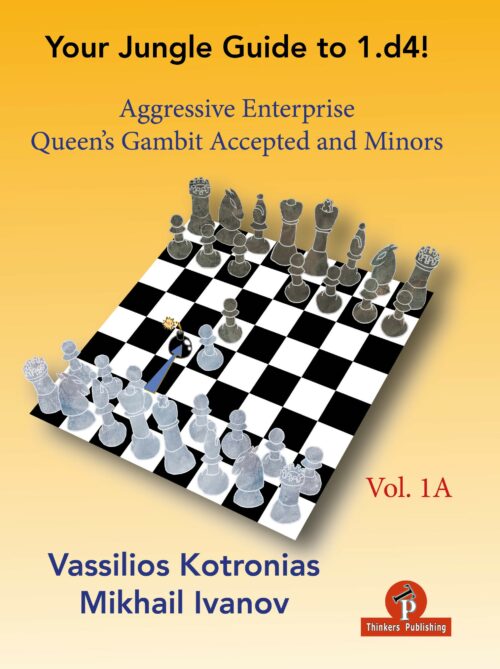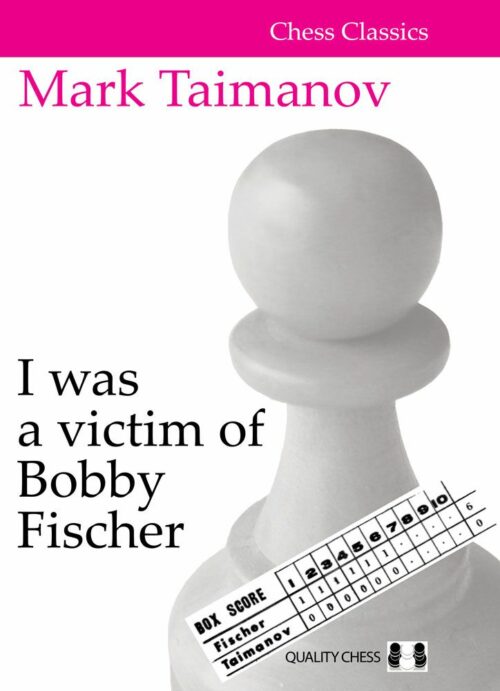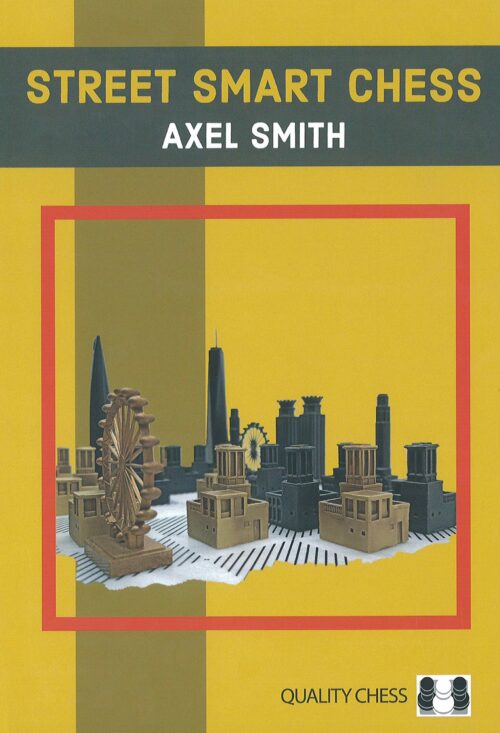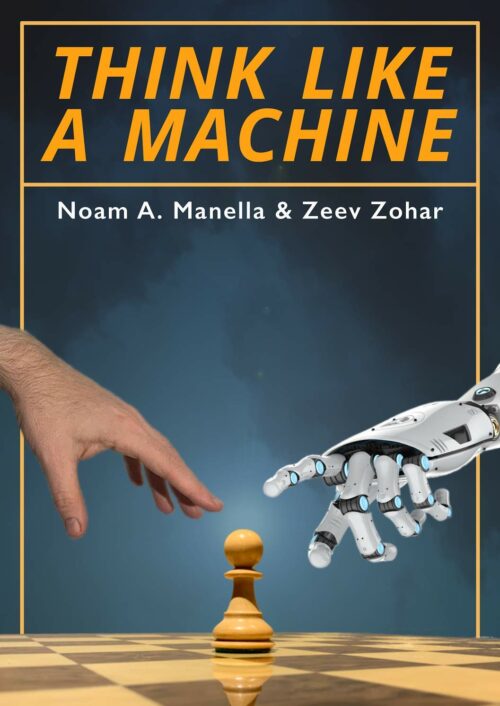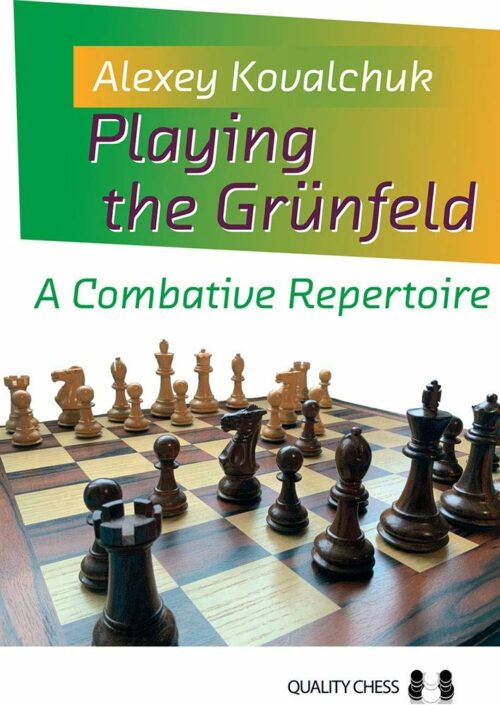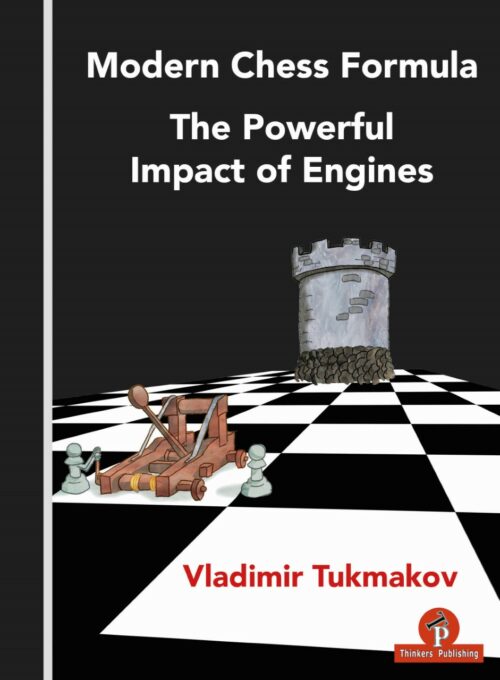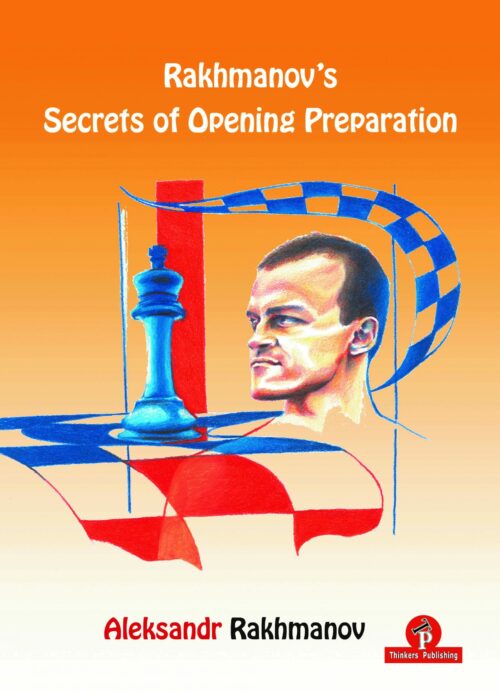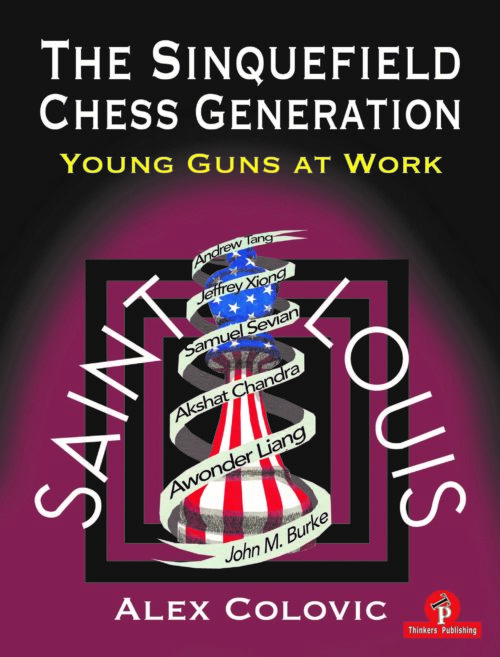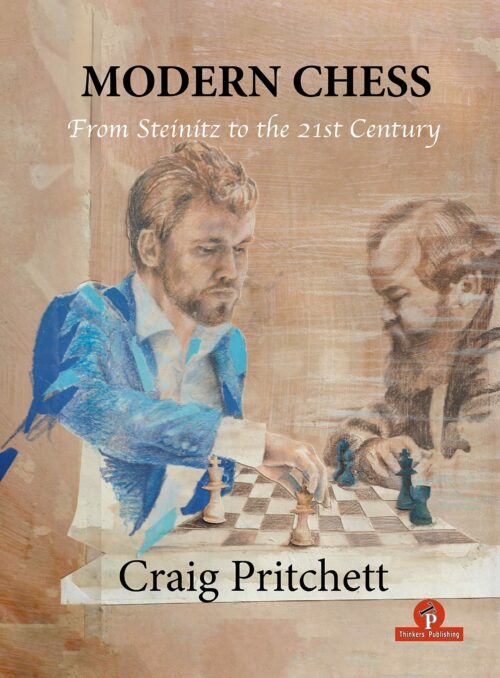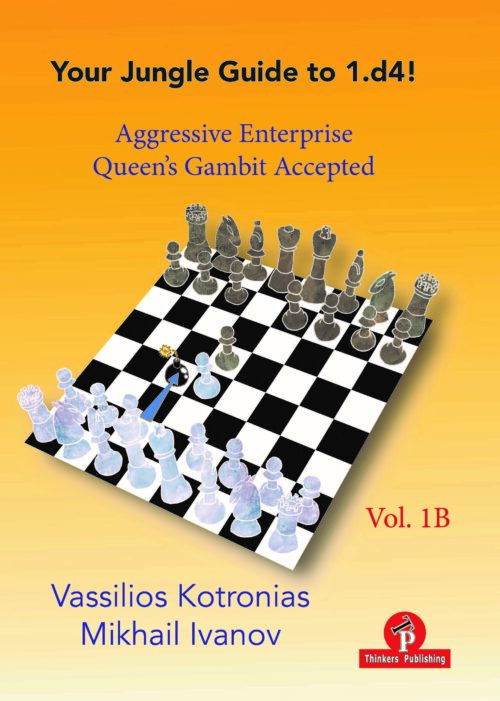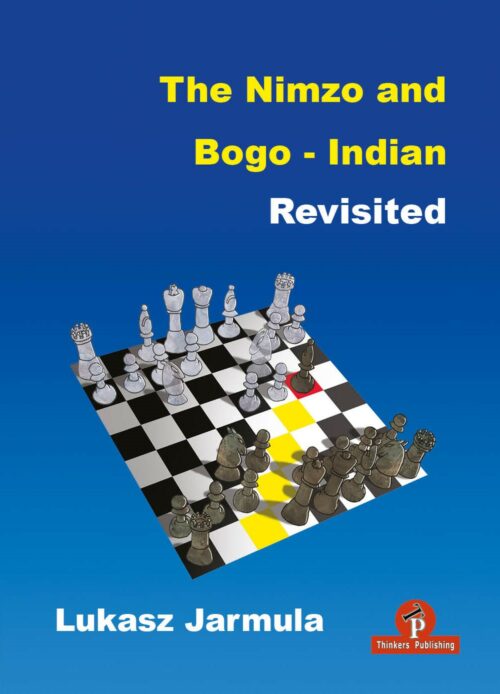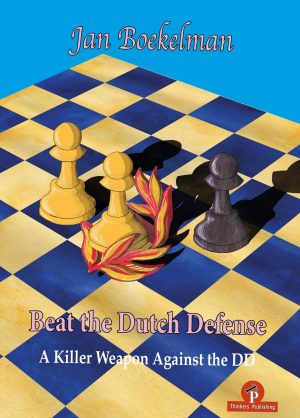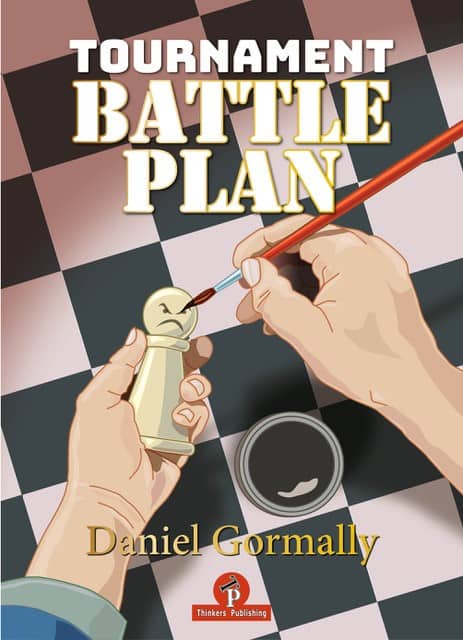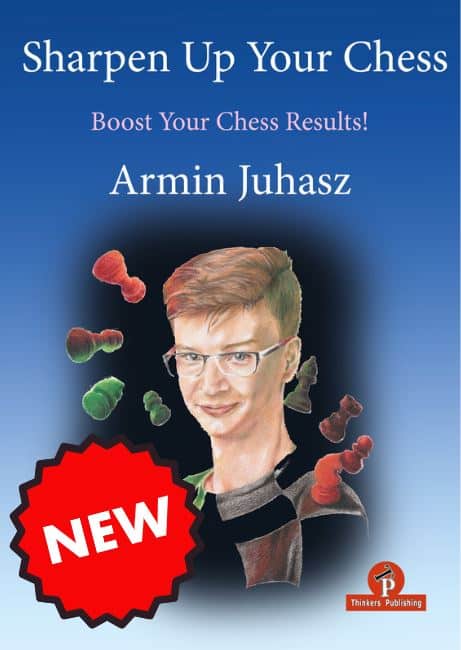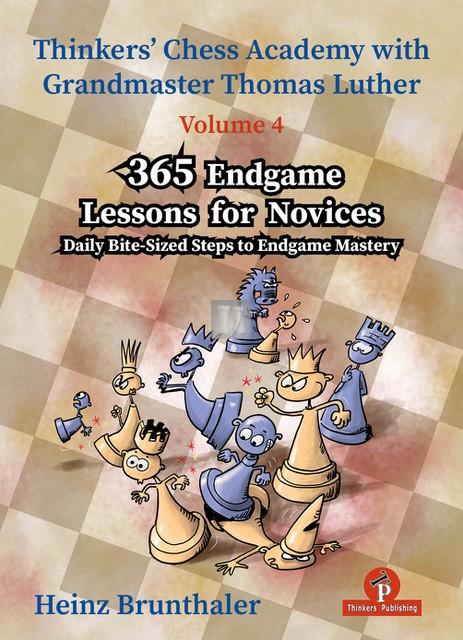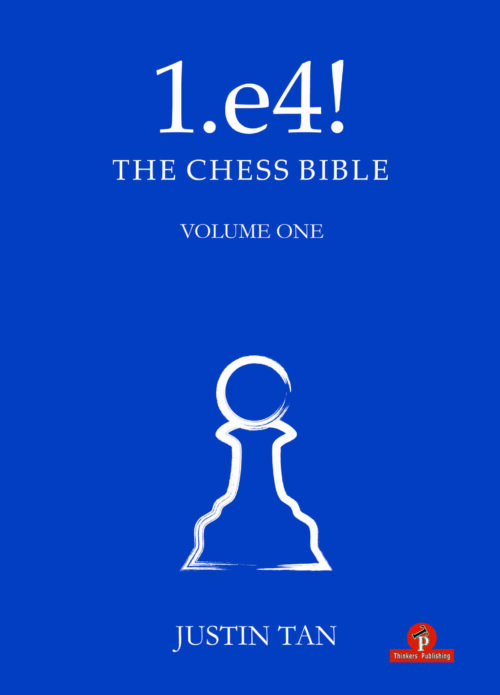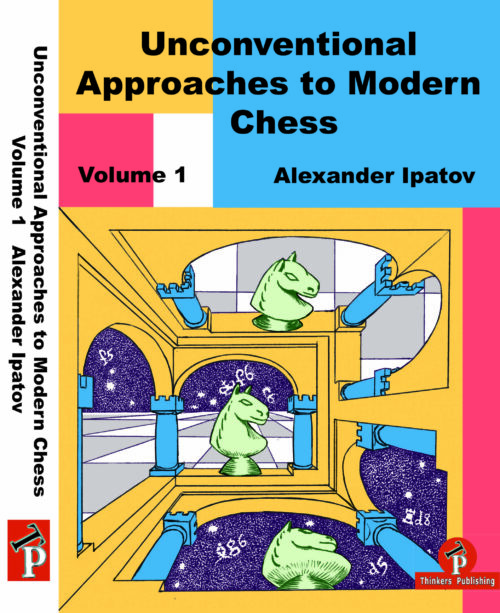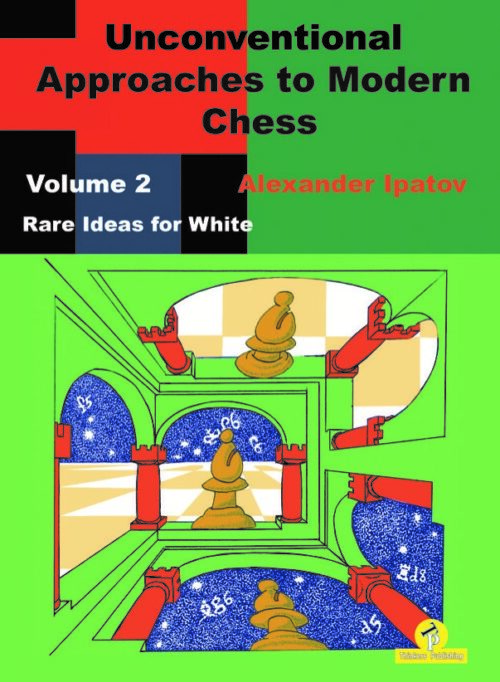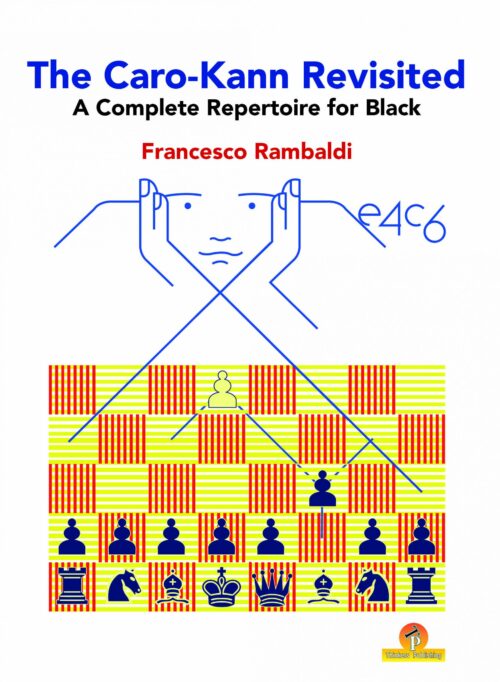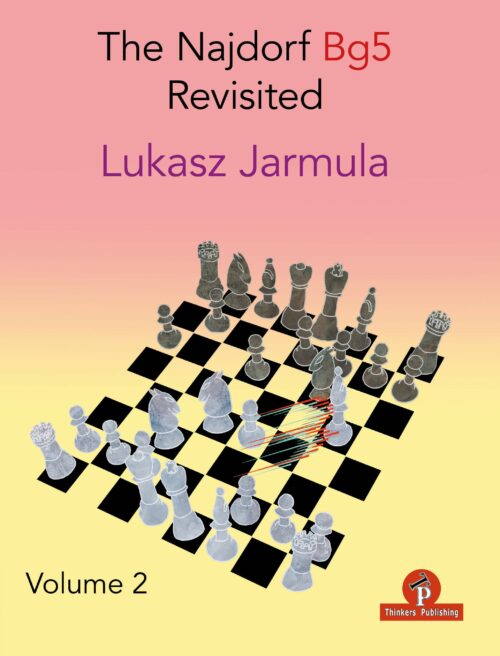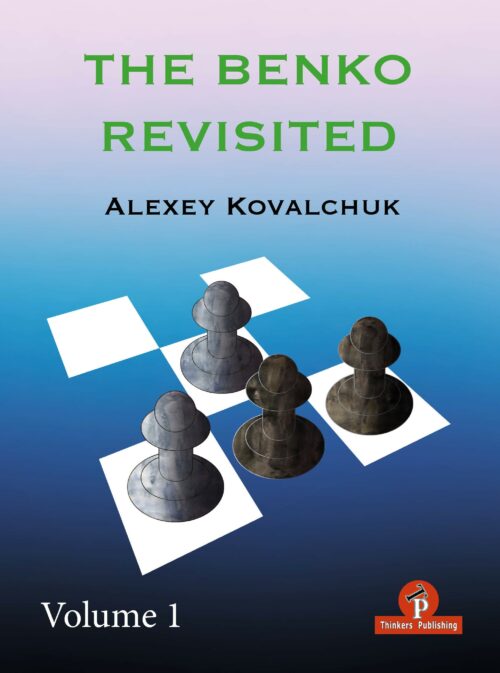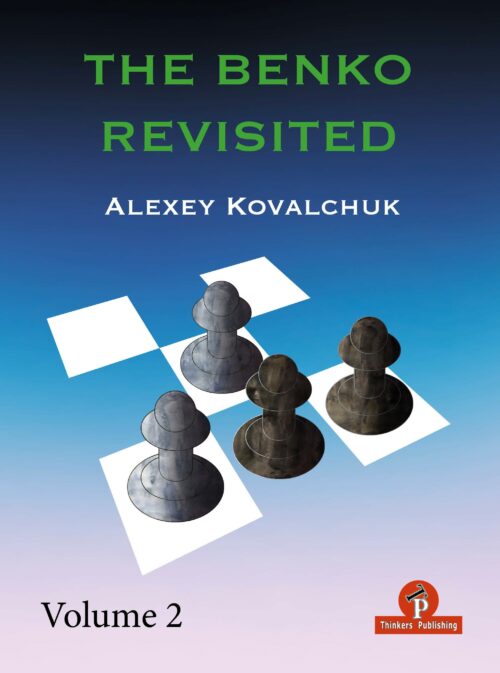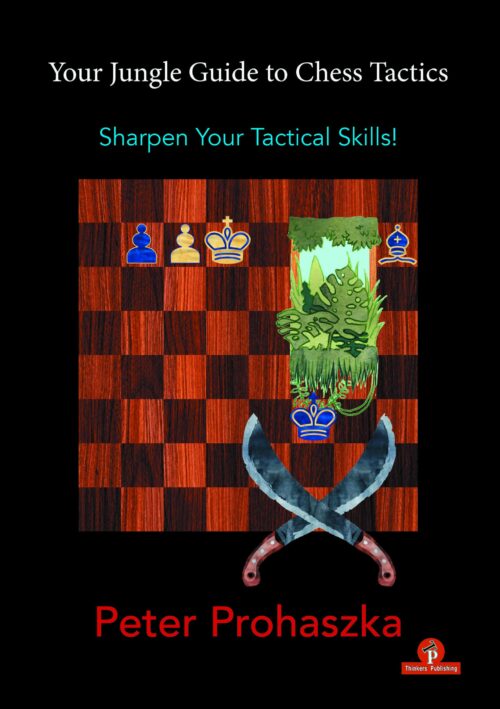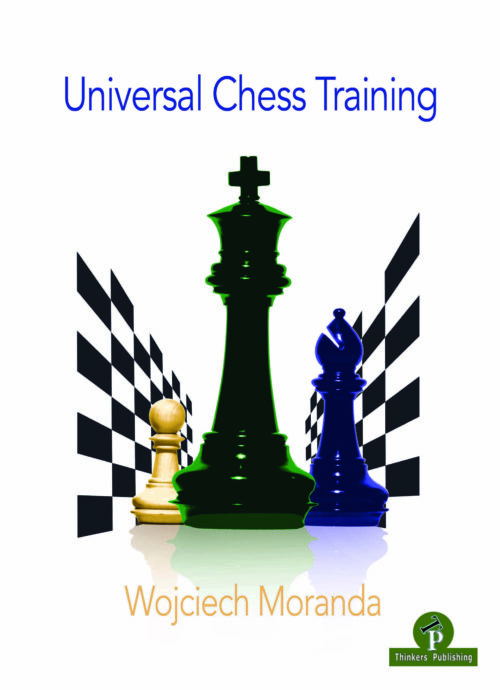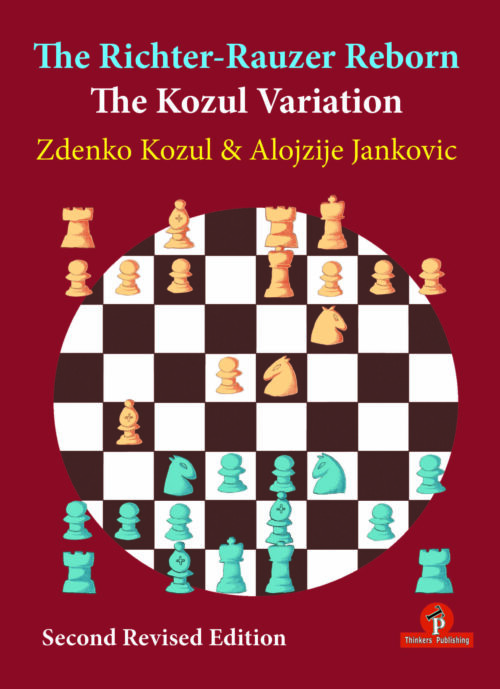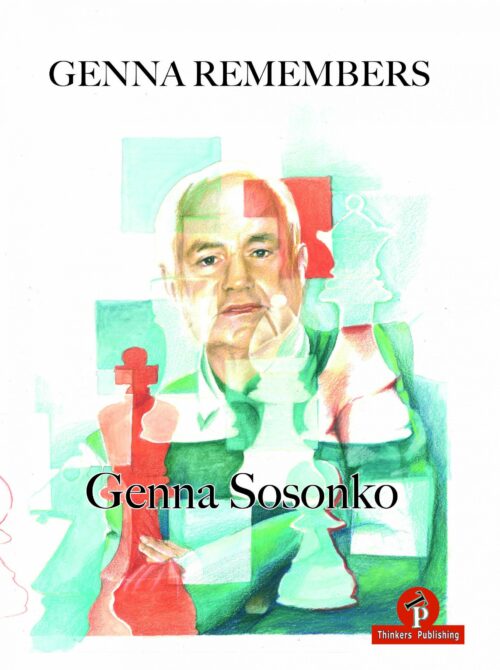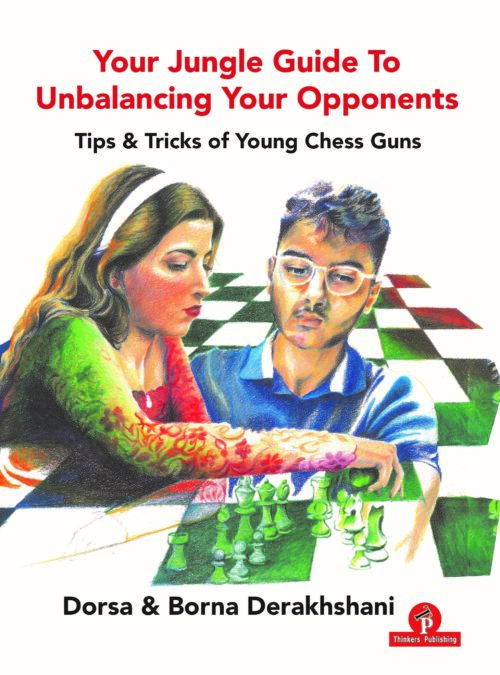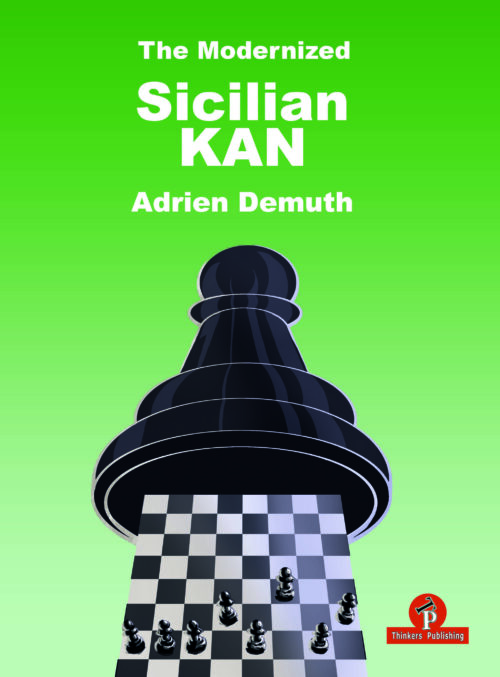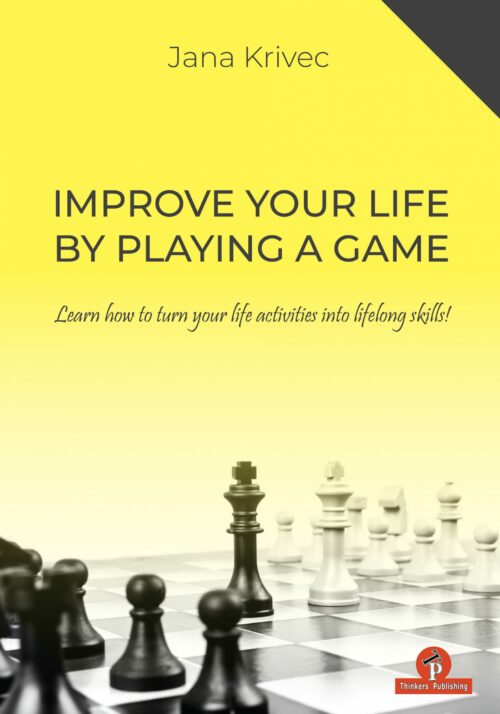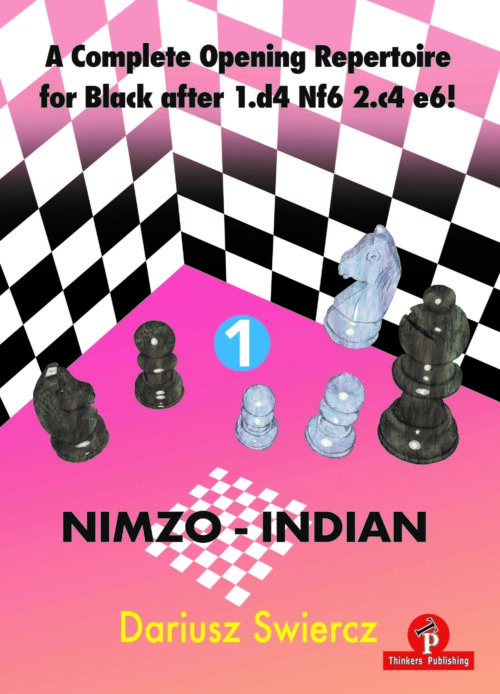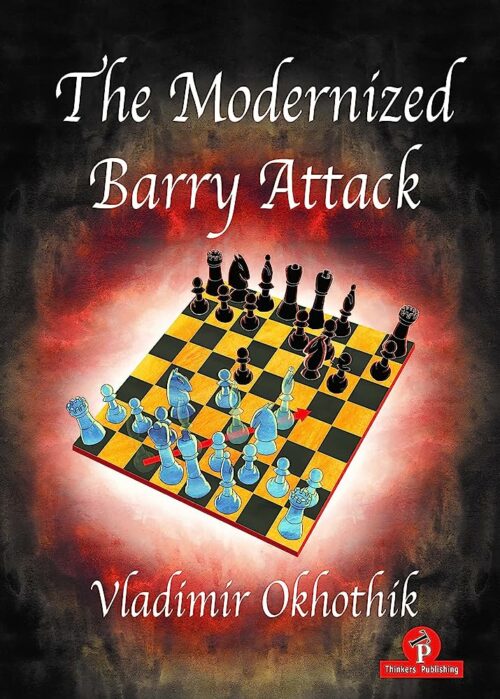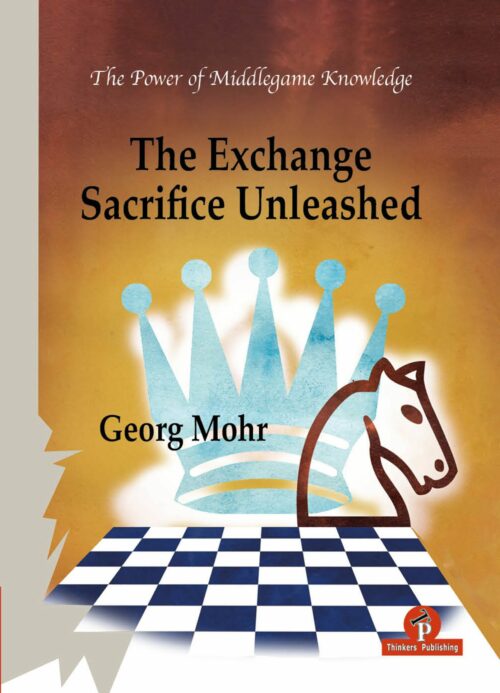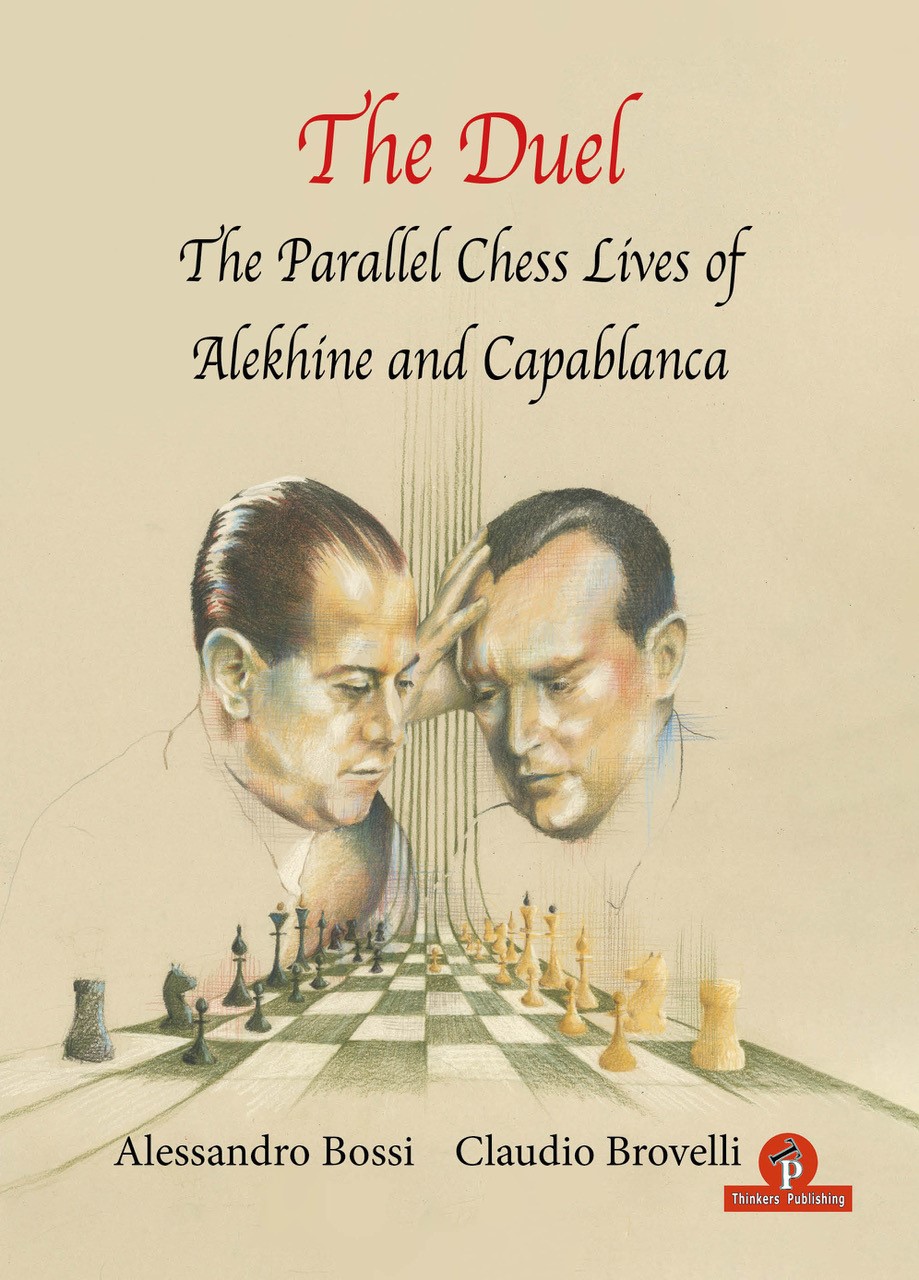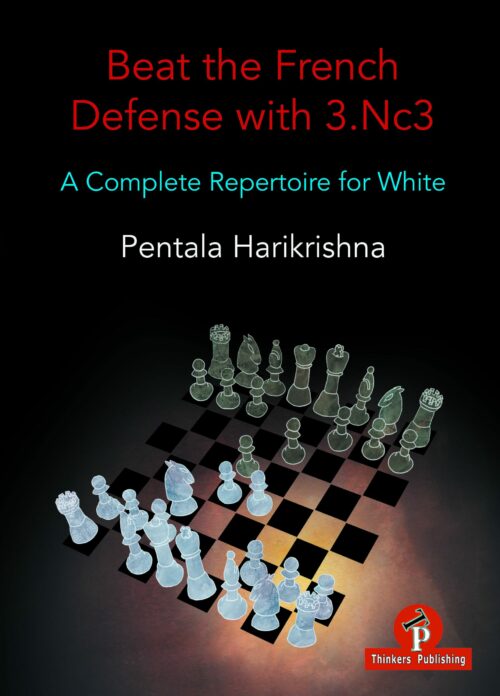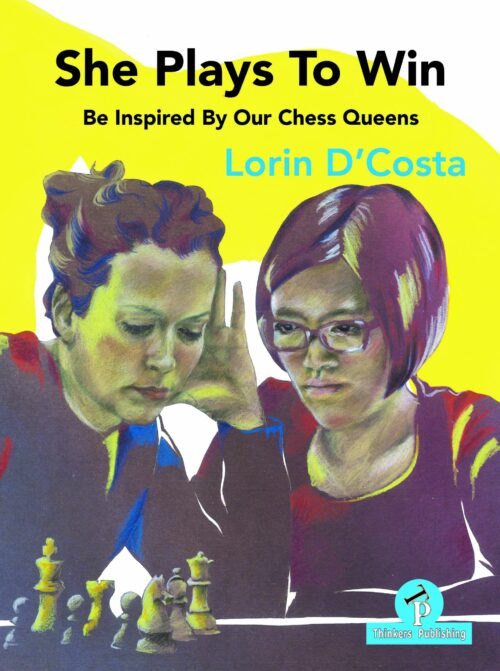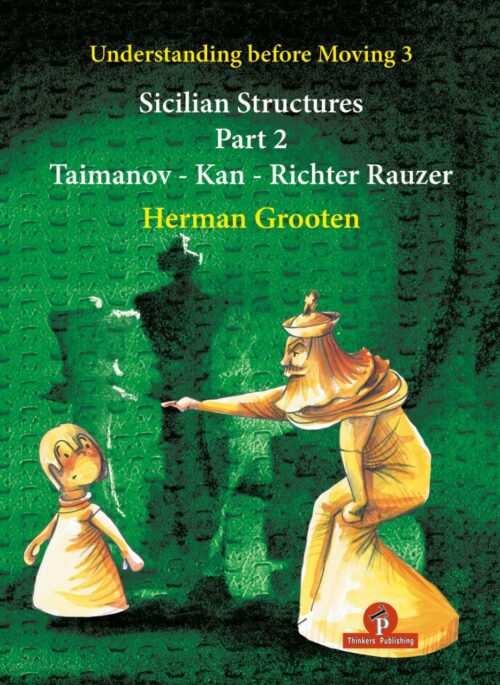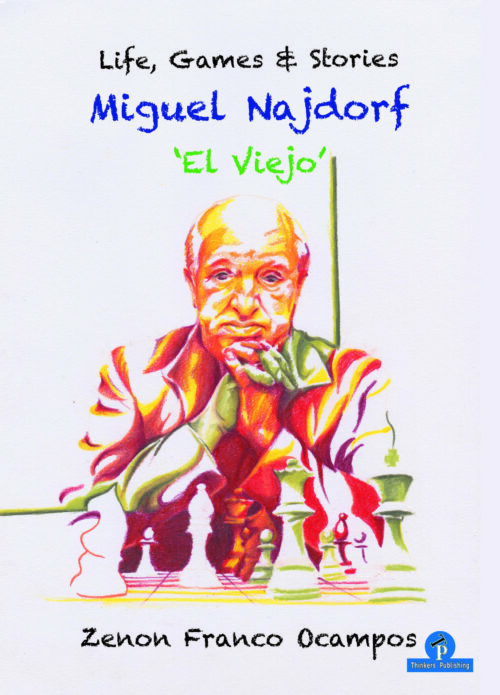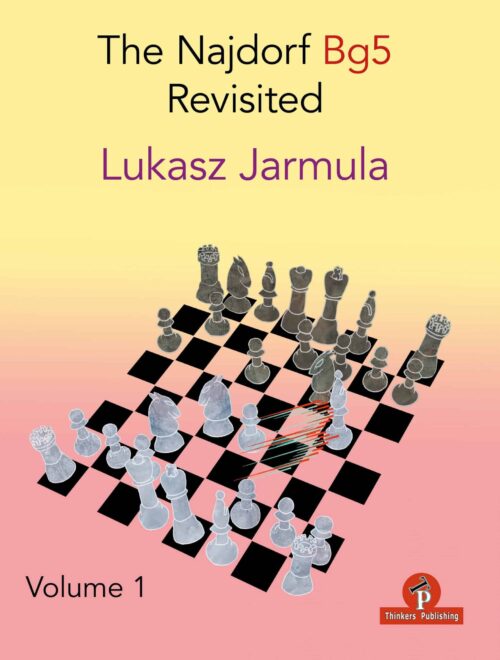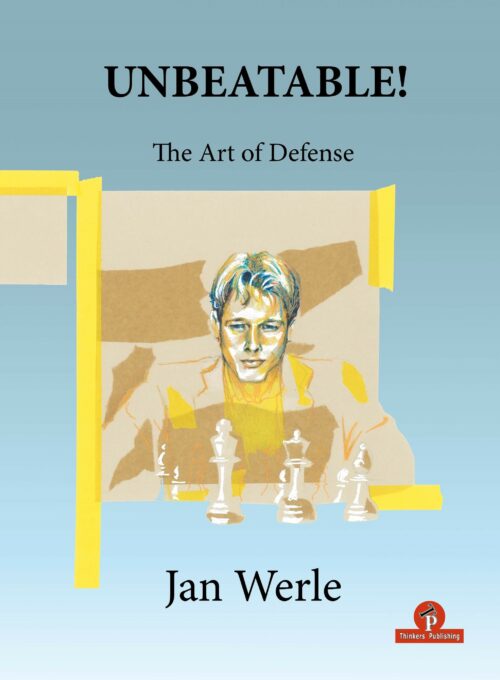-
When I decided to write The Modernized Sveshnikov (June 2020) I knew that I was basically committing myself to covering the Anti–Sicilians in a separate book as well. After all, what’s a book on the Sveshnikov alone worth when your opponents decide to avoid the Open Sicilian? Especially since the Sveshnikov is nowadays considered to be one of the most reliable options for Black in the Sicilian, White players have been investigating new territories within the Anti–Sicilians. The book you are holding in your hands, Beat the Anti–Sicilians, aims to provide a complete Black repertoire against all the critical sidelines after 1.e4 c5. The biggest part of the book covers the Rossolimo and Alapin, but also the popular lines at club player’s level like the Grand Prix Attack and the Morra Gambit, and other alternatives on White’s 2nd move are also worked out in detail.
-
“A passed pawn must be blockaded, so as to have its power restrained as much as possible. The minor pieces (knight or bishop) are ideal for this purpose, as they can rarely be forced to retreat by enemy action. On the other hand, the major pieces (queen and rook) find it difficult to achieve a stable blockade as is easy to harass them, while one must also consider that, for such valuable pieces, dealing with a mere pawn cannot be an efficient form of employment. Taking the above into account, it becomes clear that the side with the passed pawn should seek to exchange minor pieces and retain the major ones; the opposite applies to the defending side.”
-
The idea behind this book is for you to ‘play’ as in a real game, and it is my job to ensure you have a pleasant time while training. I suggest you take at least an hour and a half for each game and as your coach I will indicate when to guess the moves. Sometimes there will be suggestions — including tricky ones — to measure your concentration level. The ideas behind the moves are always explained. The games have been chosen according to my personal liking and commentaries are based on those by the players themselves, which is a great help in understanding what indeed happened. In some games you will have to guess moves for the losing side too. Indeed, I expect that as you proceed you will become familiar with the question of Mark Dvoretsky: “What could my opponent play?”. Importance has also been given to the practical aspect, which doesn’t always coincide with the suggestions off ered by the engines as best. This is to make it more like ‘a real game’.
-
Ivan Sokolov was one of the most furious attacking and creative players of his time. The author presents an overview of is his Life in Chess, full of entertaining unpublished material. He is not shy to share his opinions and promises the reader a personal roller coaster loaded with fun stories and unexpected twists. We are convinced you will enjoy the ride!
-
I found the idea to switch sides. By this, I mean to look at games from White’s perspective and then from Black’s. A rather interesting concept, as things often appear quite different, depending on the viewpoint. If one searches for videos showing a joint analysis of elite players, one may often see them completely disagree on certain positions, both of them claiming he stood, or would have stood, better here or there.
-
Mjög góð þjálfunarbók The book covers exactly what it promises to cover; they have a bit of everything in the examples ranging from silent knight maneuvers to fancy sacrifices. Their idea in the book is to help players train for tournaments by working on all aspects of the game and looking at problems in a wholesome way. They have a wide variety of topics from a wide variety of players. For example, there is an exercise of beautiful tactical play by the former World Champion Viswanathan Anand against Super Grandmaster Alexander Grischuk. As you solve the problem and move on, you will see another exercise played by their students rated around 1300. This is a beautiful way to illustrate that chess is chess, no matter who is playing the game. Just a heads-up to the reader, the latter is much harder to crack! Some of the examples like Jeffrey Xiong missing a queen trap or Nihal Sarin missing a simple way to control an open file to gain an advantage show that even the best of the best make mistakes. Even though there may be easy puzzles you can solve in a few minutes or real Titanic’s that take hours to sink in, you must consistently train with them.
-
Nýr titill! Biblía Philidor skákmannsins. Virkilega vel unnin bók sem hefur fengið mikið lof. Óhætt að mæla með þessari. “Pawns are the soul of chess.” We have all heard this phrase more than once in our chess life and we owe it to the great French player François-André Danican, so-called Philidor, considered one of the best chess players of the 18th century.
-
Endgame theory teaches us two fundamental issues: First, how to extract the maximum from a basic theoretical position with little material, where the experts (from practice comprising thousands of games) have reached definite conclusions. Second, the way in which we can handle an endgame, depending on the material remaining on the board, and the ideas and plans we should employ. The purpose of this series is to introduce the reader to advanced training concepts, using the same methods of presentation and instruction that were taught to great players by famous trainers that they have worked with. The series will start with the topic of “the Bishop Pair” and we will examine how to handle this “power of the sun” coupling.
-
Grandmasters Kotronias and Ivanov are renowned as leading theoreticians and chess trainers. They offer a unique and world-class repertoire based on 1.d4! They advocate an ambitious approach for White, with the aim to fight for an advantage in any position. This is their first joint effort; they tackle the ever-popular Queen’s Gambit Accepted and their sidelines in Volume 1A and 1B. We at Thinkers believe their job could not have been done any better.
-
This book is dedicated to chess, though I must confess it is not that same chess with which I immediately and eternally fell in love many, many years ago. There were plenty of wonderful moments, and no shortage of horrible disappointments associated with that version of the game in which I certainly considered myself a true professional. The realities of chess life during the second half of the twentieth century are diffi cult for today’s young people to imagine or understand: Tournaments lasting 30,40 days with adjourned games being completed on specific days allotted for such adjournments. Unbelievable time trouble given that back then only the unrestrained dreamer David Bronstein even thought about incremental time to be added after each move. Mountains of cigarette butts in ashtrays — a fixed attribute of the chess battles and battlefields in those severest of days. Finally, suitcases filled to the very brim with Yugoslav Chess Informants and handmade card indexes.
-
Nýr titill. Mæli með þessari! The character of any player is reflected in their game. It also applies to choosing their openings. Therefore, for you to better understand what I’m going to explain in this book, I should describe my style. I play simple positional chess and like to play the endgame. I don’t look for complications for the sake of complications, but if the position requires sacrifices based on the situation on the board, then I will do so without hesitation. I like to control the course of actions; therefore, I would prefer to play with the initiative without a pawn than vice-versa. In general, giving the opponent dynamics is a bad idea.
-
‘I as though traced the evolution of chess thought and repeated its basic steps in my own development … convinced that any player with high ambition should follow such a path’ ~ Vassily Smyslov, 125 Selected Games (1983) This book takes the reader on a journey from early 19th century developments in the game up to the present-day. It takes in the revolutionary Wilhelm Steinitz’s early summation and establishment of a firm positional basis for chess and the considerable contributions made by all of the subsequent world champions and certain other great players, including the contemporary computer phenomenon, AlphaZero.
-
What you are holding in your hands is the natural follow up of Volume 1 where some “lesser” openings aft er 1.d4 d5 2.c4 were examined, as well as a couple of less popular variations of the Queen’s Gambit Accepted. This second Volume comprises all of the established main lines of the QGA aft er our recommended 3.e4 with the intention of giving you a full picture of this topical opening while helping you build a repertoire based on aggressive ideas. Objectively speaking, it is very hard for White to find an advantage in the event of the absolute main lines 3…Nf6 and 3…e5, but we believe we have done our duty. We scrutinized multiple interesting variations with the help of engines while applying our human understanding to select those lines that would be the most unpleasant for Black. Additionally, we tried to provide you with as many alternatives as possible so as not to become “victims” of a narrow repertoire.
-
- The spirit of Indian Defenses is based on flexibility and harmony.
- Most of the lines are positional, not tactical in character.
- While playing Black, you have to accept that occasionally you will not equalize, or get surprised or out-prepared.
- Learning the material from this book should sharply limit the extent of such instances, thus improving your overall results.
- Finally, we have an important piece of advice: remember about color strategy!
- The Bogo-Indian is mainly based on dark-squared control, while the Nimzo-Indian does so on the light squares. In case you forget what to do, this may prove a very useful guideline when choosing a move.
-
The Staunton Gambit is a very rewarding opening. White’s piece development follows the classical principles of gambit play. White is ahead in development and obtains a fine initiative. Even without the theoretical knowledge of certain variations, White should be able to find his way. Best of all, White determines the direction of the game already on move two, without the risk of having to play the maneuvering games we know from the Leningrad Dutch, the Stonewall Dutch or the Classical Dutch.
-
“The endgame is the moment of truth. It is the phase of the game where we will try to reap the seeds of our effort regardless of whether that is the full point of victory or the half point of the draw. The significance of errors increases in the endgame as the opportunities for correcting them are few.” ~ Efstratios Grivas
-
- The clarity, simplicity, and pure instructiveness of this book is striking.
- The analysis is first rate, the commentary cogent, and the production excellent.
- The emphasis is on general principles that readers will be able to use in their own games.
- The key is to always stay ahead of your opponent and know how to control the chaos on the chess board. Armin Juhasz explains all this in detail without losing sight of practical decision making.
- With the right strategies, anyone can become a champion and level up their game to become unstoppable. This book is for the ambitious and keen player!
-
Crucial Exercises To Sharpen Your Understanding This is the third book of the Thinkers’ Chess Academy series. I thought long and hard about the best way to structure this Workbook. My idea was to make a book with additional exercises for readers of my earlier books Thinker’s Chess Academy Volumes 1 & 2 (TCA1 and TCA2 for short) while working with these books, plus material for really interested and ambitious readers to maintain and broaden the skills they have already learned.
-
Why do I recommend my book to you, dear reader? First of all, the lines are all analyzed very deeply. You do not have to turn on the engine and wait for the computer to produce a ready-made solution. Believe me, in analyzing this book, I used the most modern equipment, and thus the reader saves a lot of time. In our information age, time is very precious, and by buying my book you will gain at least time. I have spent a huge amount of my own time analyzing the various lines, but also commenting on the options especially for you, my friends.
-
There are two parts to this book. The first 17 chapters elaborate on the most important motifs in practical chess. The remaining 8 chapters showcase the art of attack and defense. Certain motifs feel like they belong together and the order of the chapters in which they are discussed reflects that. All 25 chapters of this book begin with an introduction which is always designed to clearly illustrate the motif or theme at hand. Most but not all of the games here are classics. All the introductions are followed by training puzzles in order to reinforce pattern recognition and learning for what has been discussed beforehand.
-
Nýr titill! Harðspjaldabók Half a century ago I left a country whose red color dominated a large portion of the world map. One way or another, the fate of almost every single person described in this book is forever linked with that now non-existent empire. Many of them ended up beyond its borders too. Cultures and traditions, and certainly not least of all a Soviet mentality, couldn’t have just left them without a trace. Having been transplanted into a different environment, they had to play the role of themselves, apart from certain corrections with regard to the tastes and customs of a new society. Nevertheless, every one of them, both those who left the Soviet Union and those who stayed behind, were forever linked by one common united phenomenon: they all belonged to the Soviet school of chess.
-
• The Barry Attack is a little rebellious but most dynamic opening • It’s one of the fastest ways to outplay your opponent in the opening. • The ‘’super repertoire’’ that always keeps Black under pressure in all variations. • Any reasonable opening set-up can work wonders for White or Black if they know it well. • Anyone who takes the trouble to play through each model example, move by move, note by note, will be rewarded. • Your strategic play will deepen and your tactics will improve along with your assessment skills, and you’ll end up with a great repertoire!
-
Á útsölu!• Compensation is a chess concept that we only fully understand when we enter the world of serious chess. • The relative value of pieces is perhaps the most difficult chess concept of all to explain. • It is one that every player must feel and believe in and can only be accepted with the help of our own practice, and when we feel it come together as though a part of us. • Why so much talk about such or similar sacrifices? Quite simply because we are afraid! We have been taught, and practice shows and proves the clear fact, that the closer we get to the last part of the game, the ending, the more pronounced a material advantage becomes. • If in the middlegame we can still hope for sudden turns, for the influence of other pieces, this is negligible in the endgame. • Maybe less so with tactical sacrifices, where we immediately see what the sacrificer gets in return. • How can we not accept the rook that the opponent offers us, when there is nothing concrete to see? One or two weaknesses perhaps, but they can be eliminated, and the material advantage and a secure victory in the endgame remains.
-
I am convinced that to cultivate the memory of the past and to study the classics is always useful and worthwhile, not least because it enables us to understand and face with greater awareness the facts and the problems of the present time. Much has already been written about the giants who have preceded us, and in particular, the Cuban, José Raúl Capablanca, and the Russo-Frenchman, Alexander Alekhine, but a new approach can surely offer different and interesting perspectives. In The Duel, Alessandro Bossi and Claudio Brovelli go deep into the lives of these two legendary World Champions, who have left their mark in an unforgettable manner on their epoch (the first forty years of the 20th century) and who remain – in part, due to their very different personalities and relationship with the game – inimitable examples for all the chess-playing generations to come. The choice to present in parallel the two biographies (in my opinion quite rightly so), shows clearly and effectively similarities and differences, not only in the style of play, but also in the approaches to life of the two protagonists. With very precise historical descriptions and presenting the events in chronological order, the authors accompany us on a journey alongside the lives of these two legends of chess. In this fashion the personalities emerge, in many ways antithetical but equally fascinating: Capablanca, friendly and charming in society, precocious, genial and nearly invincible on the chessboard, and Alekhine, who combined a wonderful talent with a capacity for work, a competitive attitude and an energy which was truly enviable. Alekhine was rational and focused in pursuing his objective to supersede his rival. The Cuban champion represented for the younger Russian player a reference and a model – firstly, to be studied from a critical and highly penetrating perspective and then to be surpassed and beaten. The fact that, after wrestling the world title from him in the year 1927, Alekhine had always refused Capablanca . The Duel, the chance of revenge will always remain a cause of regret for chess fans, but it also demonstrates that the new World Champion was fully aware of having performed a feat that was perhaps not repeatable. The many masterpieces that both of them created on the chess board, which constitute for the public their most important legacy, enrich this volume and underline key moments of their respective careers. The games are analyzed well by the authors, who enlighten the reader as to how the diverse conceptualization and the different styles of the “duelists” (the more strategic and positional of Capablanca’s versus the more aggressive and combinative of Alekhine’s) are instructive and entertaining even nowadays, for all those who love chess and who wish to improve their understanding of it. The value of this volume lies also in the parts where Bossi and Brovelli, with painstaking accuracy, have quoted both direct impressions of the two protagonists (interviews, articles, letters and quotations from their works) and evaluations (in the comments and memories of their contemporaries). In such a way, a contest of wider significance is described, which helps in understanding the characters, the period and the specific contexts. Among the witnesses emerges, in particular, Esteban Canal, the great champion of Peruvian origin who spent much of his time in Italy. He had the privilege of fighting with both Capablanca and Alekhine and becoming acquainted, if not a friend, with them. One of the authors, Alessandro Bossi, was lucky enough to come to know Canal personally and to hear directly from him of the many episodes and anecdotes described in this book. Enjoy your reading! GM Michele Godena, March 2022
-
Find your role model. This book contains games from every single female World Champion, as well as young up and comers, top seasoned professionals, streamers, and even a section at Beth Harmon from the recent famed Queen’s Gambit hit show. This book is not just for girls and women, however. Any chess player can learn from these games and discover female chess history, both from the famous players in the past right up to the present day.
